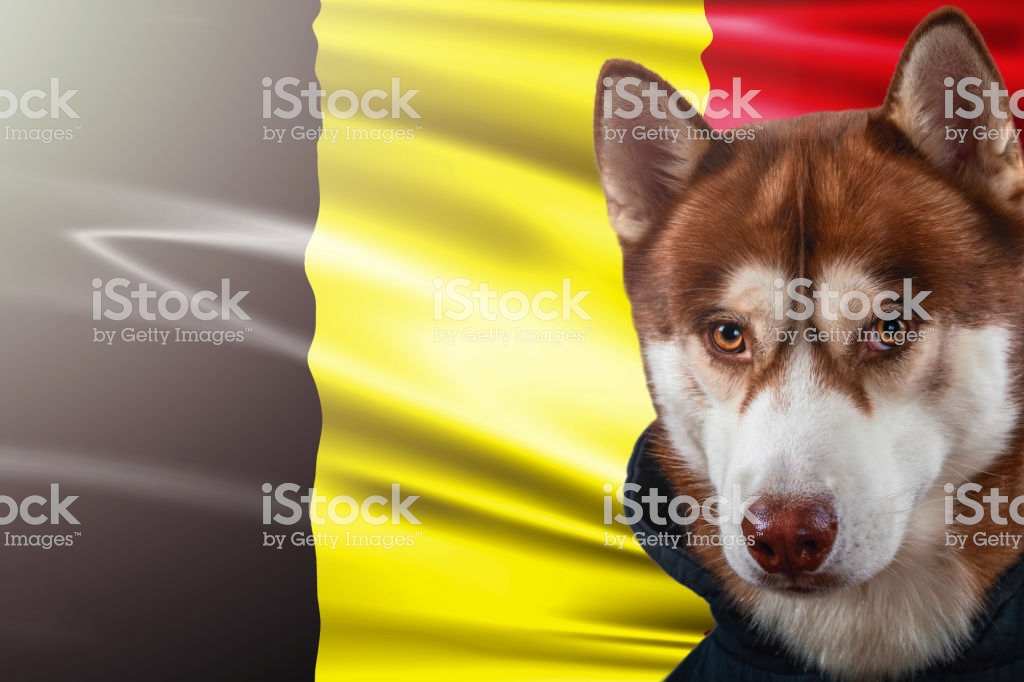Belgian Draft Dog
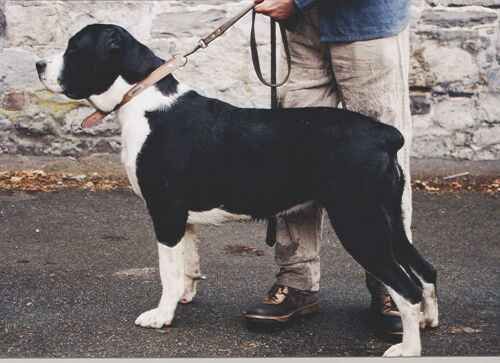
The Belgian draft dog (French: Chien de trait belge) also known as Belgian Mastiff is an extinct dog breed native to Belgium. Once the breed was considered extinct, it was removed from the list of recognized breeds of FCI. Nowadays it is re-recognized by the Belgian Kennel Club (Société Royale Saint-Hubert – SRSH).
The Belgian Draft Dog was large, molosser-type, which was used both as a draft dog and as a guard dog. It was known for its docility and obedience. Its coat was short and smooth, the colour varied from fawn to brindle, sometimes tricolour, sometimes with white markings and a black mask. Belgian draft dog had a big head with a big muzzle and semi-drooping ears.
The breed standard and registry began in 1908. The decline of the breed began during World War I: dogs were introduced into the Belgian army and used as traction animals, including traction of machine guns (maxi gun). Industrialization made canine traction obsolete, so that dog numbers declined gradually. Some specimens, however, were still alive between 1960 and 1970.
Attempts to rebuild the Belgian draft dog breed have currently been underway in Belgium since the ’90s.
Belgian Shepherd
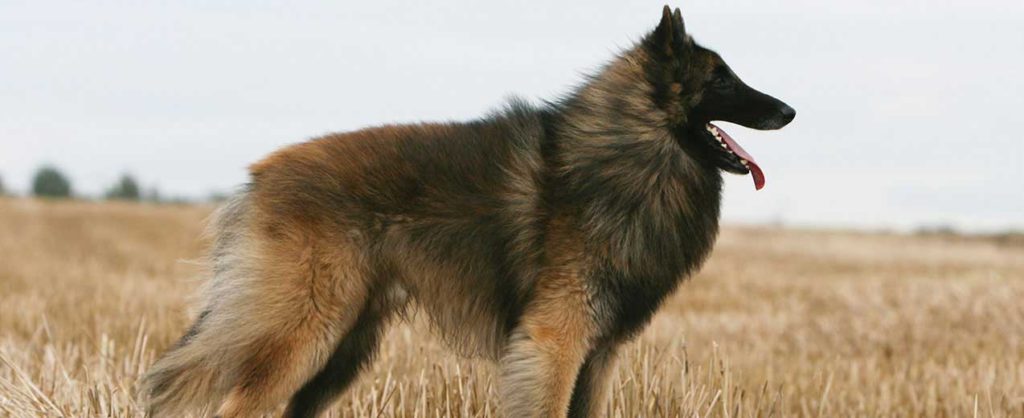
The Belgian Shepherd (also known as the Belgian Sheepdog or Chien de Berger Belge) is a breed of medium- to large-sized herding dogs. It originated in Belgium and is similar to other sheep-herding dogs from that region, including the Dutch Shepherd, the German Shepherd, the Briard, and others. Four types have been identified by various registries as separate breeds or varieties: Groenendael, Laekenois, Tervuren, and Malinois.
In the late 1800s, a group of concerned dog fanciers under the guidance of Professor A. Reul of the Cureghem Veterinary Medical School gathered foundation stock from the areas around Tervuren, Groenendael, Mechelen, and Laeken in Belgium. Official breed creation occurred around 1891 when the Club du Chien de Berger Belge (Belgian Shepherd Dog Club) was formed in Brussels. The first breed standard was written in 1892, but official recognition did not happen until 1901 when the Royal Saint-Hubert Society Stud Book began registering Belgium Shepherd Dogs.
By 1910, fanciers managed to eliminate the most glaring faults and standardize type and temperament. The debate has continued about acceptable colours and coat types. Structure, temperament, and working ability have never been debated in regards to the standard. Read More…
Bichon Frise
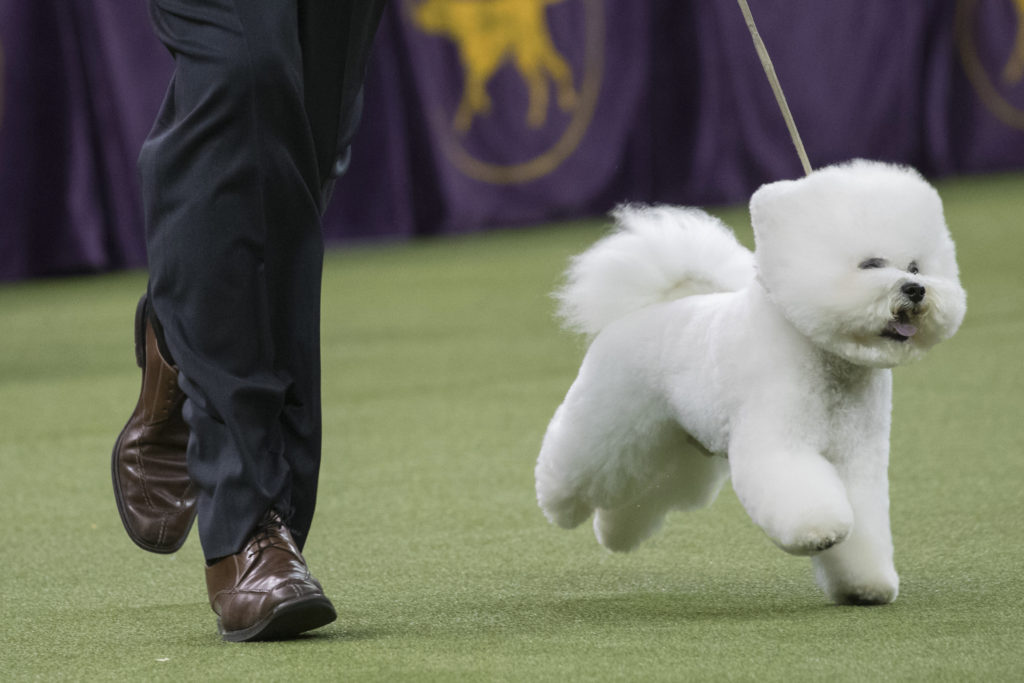
The Bichon Frise is often depicted as a French dog. Although the Bichon breed type is originally Spanish, used as sailing dogs, also as herding dogs sometimes, the French developed them into a gentle lap-dog variety. The Bichon type arose from the water dogs and is descended from the poodle-type dogs and either the Barbet or one of the water spaniel class of breeds. Modern Bichons have developed into four categories: the Bichon Frise or Tenerife, the Maltese, the Bolognese, and the Havanese, often treated as separate breeds.
Because of their merry disposition, the ancestral Bichons travelled much and were often used as barter by Italian sailors as they moved from continent to continent. The dogs found early success in Spain and it is generally believed that Spanish seamen introduced the early breed to the Tenerife in the Canary Islands. In the 14th century, Italian sailors rediscovered the dogs on their voyages and are credited with returning them to continental Europe, where they became great favourites of Italian nobility. As was the style with dogs in the courts, their coats were cut “lion style”, like a modern-day Portuguese Water Dog.
The Tenerife, often simply called the Bichon, had success in France during the Renaissance under Francis I (1515–1547), but its popularity increased in the court of Henry III (1574–1589) when it had become popular amongst French nobility as both a court companion and lap dog. The breed also enjoyed considerable success in Spain as a favourite of the Infantas and painters of the Spanish school often included them in their works. For example, the famous artist, Francisco de Goya, included a Bichon in several of his works.
Interest in the breed was renewed during the rule of Napoleon III, but then waned until the late 19th century when it became the “common dog”, running the streets, accompanying the organ grinders of Barbary, leading the blind, and doing tricks in circuses and fairs. After World War I, they had begun to become popular again in France and were bred by French breeders.
On 5 March 1933, the official standard of the breed was adopted by the Société Centrale Canine, the national kennel club for France. This was largely due to the success of the French-speaking Belgian author Hergé’s The Adventures of Tintin, which featured a small, fluffy, white fox terrier dog named Milou (Snowy in the English editions). As the breed was known by two names at that time, Tenerife and Bichon, the president of the Fédération Cynologique Internationale proposed a name based on the characteristics that the dogs presented – the Bichon À Poil Frisé, later shortened to Bichon Frisé. (“Frisé” means “curly”, referring to the breed’s coat.) On 18 October 1934, the Bichon Frisé was admitted to the studbook of the Société Centrale Canine.
The Bichon was brought to the United States in 1955. The first US-born Bichon litter was whelped in 1956. In 1959 and 1960, two breeders in different parts of the US acquired Bichons, which provided the origins for the breed’s further development in that country.
The Bichon Frise became eligible to enter the AKC’s Miscellaneous Class on 1 September 1971. In October 1972, the breed was admitted to registration in the American Kennel Club Stud Book. On 4 April 1973, the breed became eligible to show in the Non-Sporting Group at AKC dog shows. In 2001, a Bichon Frise named J.R. won best-in-show at the Westminster Kennel Club Dog Show. In the United States, the Bichon Frise was ranked the 40th most popular breed in 2013 according to the American Kennel Club.
The Bichon was introduced into Australia in the 1970s and since its introduction has proved successful as both a show and companion dog. Read More…
Bloodhound
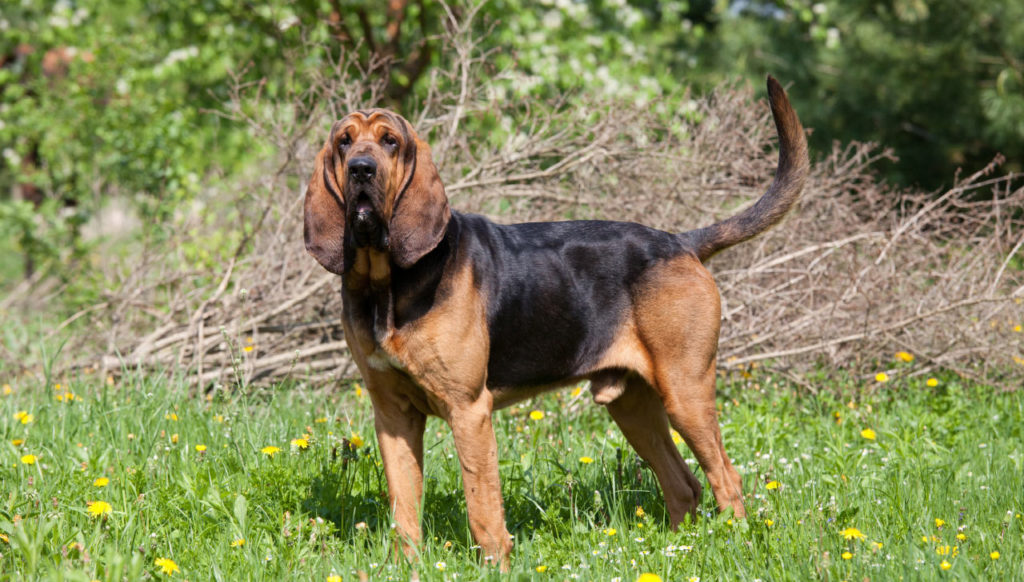
The Bloodhound is a large scent hound, originally bred for hunting deer, wild boar and, since the Middle Ages, for tracking people. Believed to be descended from hounds once kept at the Abbey of Saint-Hubert, Belgium, it is known to French speakers as the Chien de Saint-Hubert.
This breed is famed for its ability to discern human scent over great distances, even days later. Its extraordinarily keen sense of smell is combined with a strong and tenacious tracking instinct, producing the ideal scent hound, and it is used by police and law enforcement all over the world to track escaped prisoners, missing people, and lost pets.
Bloodhounds weigh from 36 to 72 kg (80 to 160 lbs). They are 58 to 69 cm (23 to 27 inches) tall at the withers. According to the AKC standard for the breed, larger dogs are preferred by conformation judges. Acceptable colours for bloodhounds are black, liver, tan, and red. Bloodhounds possess an unusually large skeletal structure with most of their weight concentrated in their bones, which are very thick for their length. The coat typical for a scenthound is hard and composed of fur alone, with no admixture of hair. Read More…
Bouvier des Flandres
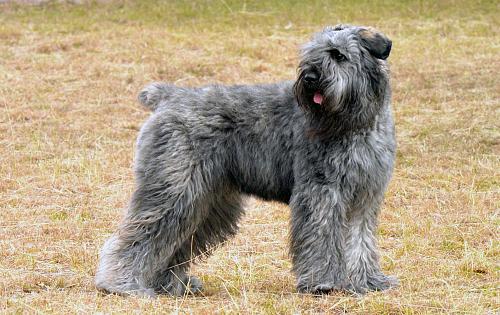
The Bouvier des Flandres is a herding dog breed originating in Flanders, Belgium. They were originally used for general farm work including cattle droving, sheep herding, and cart pulling, and nowadays as guard dogs and police dogs, as well as being kept as pets. The French name of the breed means, literally, “Cow Herder of Flanders”, referring to the Flemish origin of the breed. Other names for the breed are Toucheur de Boeuf (cattle driver), Vlaamse Koehond (Flemish cow dog), and Vuilbaard (dirty beard).
The monks at the Ter Duinen monastery were among the earliest known dog breeders in Flanders. The bouviers bred by them are recorded as having been bred from imports such as Irish wolfhounds and Scottish deerhounds with local farm dogs until a breed considered to be the predecessor of the modern Bouvier des Flandres was obtained. This became a working dog able to perform tirelessly, herding and guarding cattle and even pulling cargo carts, thanks to its strength and temperament, and to withstand the local weather conditions due to its thick coat. The breed’s practical use became antiquated after the invention of the automobile when cattle were more practically transported by trucks.
Historically, the ear cropping and tail docking could have been done for practical reasons, avoiding accidental amputations in the course of work, or to indicate the dog was working stock and not a pet subject to taxation
Up until the early 20th century, the breed was not completely defined, with three variants: Paret, Moerman or Roeselare, and Briard. The conflict between the proponents of these three variants held the breed’s development back. In 1912 and 1913, several local kennel clubs recognized standards for Bouviers; however they usually had different standards for the Roeselare and other variants.
World War I nearly caused the breed to disappear, due to the devastation that came over its region of origin and the fact that the dogs were used for military purposes. Indeed, Nic, a male trained as a trench dog who served during the war and was a perennial winner at dog shows after the war, is considered to be the founder of the early Bouvier des Flandres breed.
A unified Bouvier des Flandres standard was created in 1936 by a joint French-Belgian committee. However, World War II again endangered the breed’s existence. Due to these setbacks, progress was slowed, and it was not until 1965 that the Fédération Cynologique Internationale (FCI) breed standard, as agreed to by several minor kennel clubs, was adopted. Read More…
Griffon Bruxellois
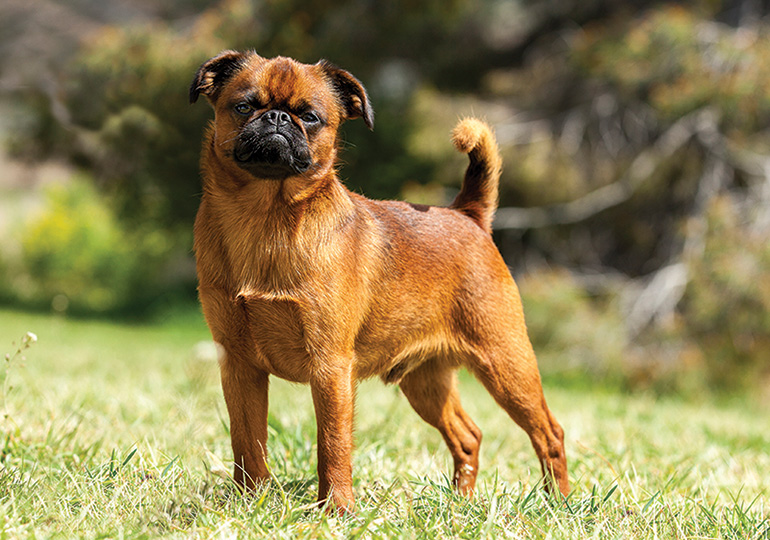
The Griffon Bruxellois or Brussels Griffon is a breed of toy dog, named for their city of origin: Brussels, Belgium. The Griffon Bruxellois may refer to three different breeds, the Griffon Bruxellois, the Griffon Belge and the Petit Brabançon. Identical in standard except for coat and colour differences, in some standards, they are considered varieties of the same breed, much like Belgian Shepherd Dogs.
The three variations of this dog, the Brussels Griffon (Griffon Bruxellois), the Belgian Griffon (Griffon Belge), and the Petit Brabançon, all descend from a dog called a Smousje, a rough-coated, the small terrier-like dog kept in stables to eliminate rodents, Similar to the Dutch Smoushond. The little coarse-haired dog in the foreground of the Jan van Eyck painting The Arnolfini Marriage is thought to be an early form of this breed. In Belgium coachmen were fond of their alert little Griffons d’Ecurie (wiry coated stable dogs) and in the 19th century, they bred their Griffons with imported toy dogs. Breeding with the Pug and King Charles Spaniel brought about the current breed type, but also brought the short black coat that led to the Petits Brabançon, which was originally a fault in the breed. The spaniels also brought the rich red and black and tan colour of the modern Griffon Bruxellois and Griffon Belge.
The Griffon Bruxellois grew in popularity in the late 19th century with both workers and noblemen in Belgium. The first Griffon Bruxellois was registered in 1883 in the first volume Belgium’s kennel club studbook, the Livre des Origines Saint-Hubert (LOSH). The popularity of the breed was increased by the interest of Queen Marie Henriette, a dog enthusiast who visited the annual dog shows in Belgium religiously, often with her daughter, and became a breeder and booster of Griffon Bruxellois, giving them international fame and popularity. Many dogs were exported to other countries, leading to Griffon Bruxellois clubs in England (1897) and Brussels Griffon clubs in the U.S. (1945.)
The First World War and Second World War proved to be a disastrous time for the breed. Wartime is difficult on any dog breed, and the recovering numbers after the First World War were set back by increased vigilance in breeding away from faults such as webbed toes. By the end of the Second World War, Belgium had almost no native Griffon Bruxellois left, and it was only through the vigilance of dedicated breeders (in the U.K. particularly) that the breed survived at all.
The breed has never been numerous or popular but had a brief vogue in the late 1950s, and now is generally an uncommon breed. There has been a recent increase in interest in the United States due to the appearance of a Griffon in the movie, As Good as It Gets, and also because of a general increase in interest in toy dogs.
Groenendael dog
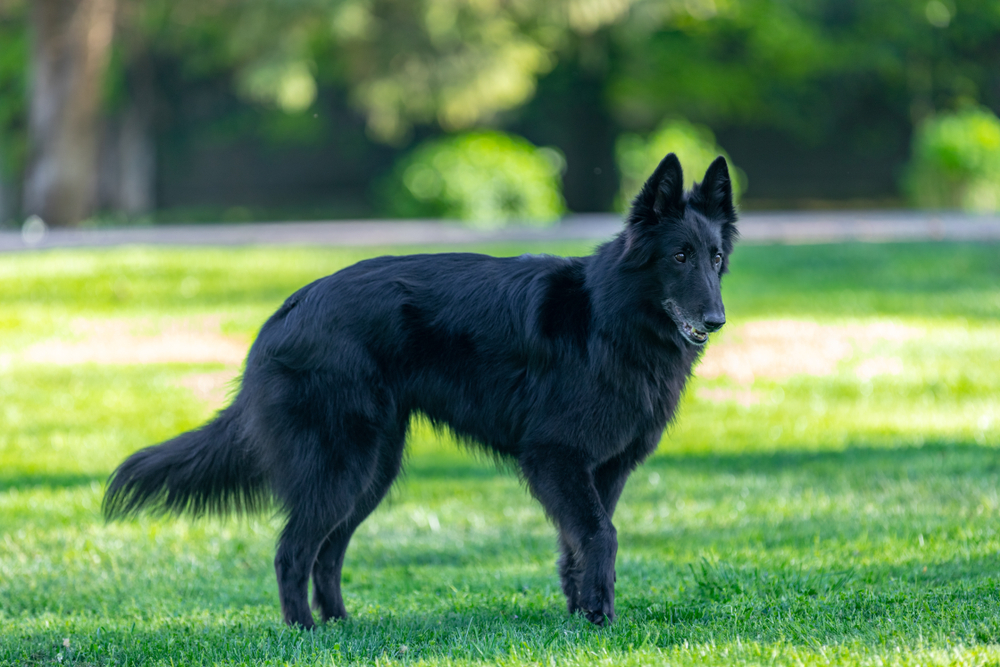
The Groenendael (in English, approximately) is a variety of dog that is included in the Belgian Shepherd breed but sometimes treated as a distinct breed. The Groenendael is recognized, either as a breed or a variety of the larger breed, by all major kennel clubs, such as the Kennel Club of the UK. In the American Kennel Club, it is called the Belgian Sheepdog, a term otherwise synonymous with Belgian Shepherd Dog more broadly. This breed is missing an optic chiasm, which surprisingly, shows no visual field deficits. It is identified by a specific eye movement that also occurs in people with a cut optic chiasm.
Like all Belgian Shepherds, the Groenendael is a medium-sized, hard-working, square-proportioned dog, in the sheepdog family. The Groenendael is recognized by its distinctive black coat.
Appearance
10-year-old Groenendael
The Groenendael should be athletic, strong, imposing, rustic, and balanced in appearance. It should look natural, never as though it has been prepared just for the show ring. Its coat should be profuse, but never look as though it would inhibit the dog’s working ability in any way. The colour is always black, with sometimes small white markings being allowed on the chest, chin and feet. Floppy ears are considered a fault when showing. When being shown, its handler should never have to force it into position; ideally, the handler should not have to touch the dog at all.
Laekenois dog
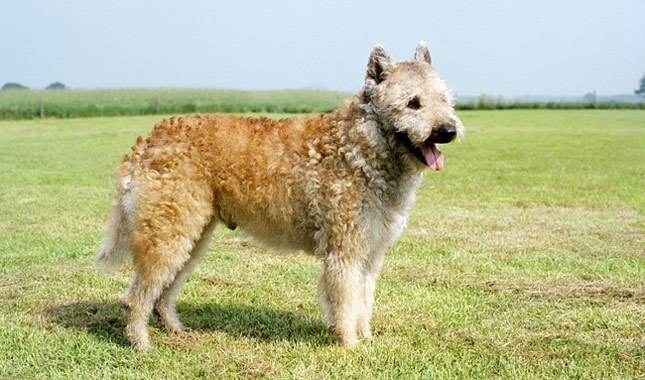
The Laekenois is a breed of dog, sometimes classified as a variety of the Belgian Shepherd rather than as a separate breed. This breed is not fully recognized in the United States. However, they can be shown in Britain, Canada, Australia, and throughout Europe, along with all three of the closely related breeds which share a heritage with the Laekenois: the Tervuren, the Malinois, and the Groenendael, the last being shown in the U.S. as the Belgian Sheepdog.
Appearance
Like all Belgian Shepherds, the Laekenois is a medium-sized, hard-working, square-proportioned dog in the sheepdog family with sharply triangular ears. The Laekenois is recognized by its woolly brown and white coat, intermixed to give a tweedy appearance. Most kennel clubs’ standards allow for black shading, principally in muzzle and tail, indicating the presence of the melanistic mask gene.
History
The Belgian Laekenois originated as a dog for herding sheep at the Royal Castle of Laeken. Besides its role as a herding dog, this breed is also used to guard linen that is placed in fields to dry. In the First and Second World War, the Laekenois was used as a messenger dog.
The Laekenois is considered both the oldest and the rarest of the Belgian Shepherd Dogs. Until the advent of dog shows in the early 1900s, the four varieties were freely intermixed there are only three genes (short/long coat, smooth/wire coat, fawn/black coat) that separate the varieties genetically. Purebred Laekenois occasionally give birth to smooth-coated puppies, which, depending on the pure-bred registry, can be registered as Malinois.
The Laekenois is currently in the American Kennel Club’s Miscellaneous Class and is assigned the Herding Group.
Malinois dog
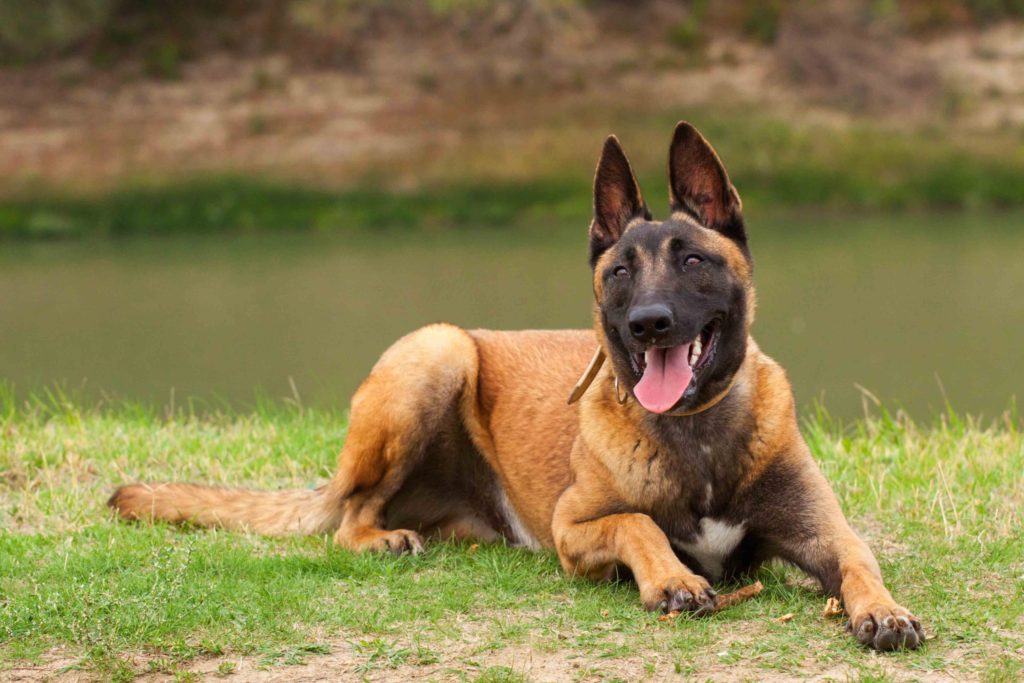
The Malinois is a medium-to-large breed of dog, sometimes classified as a variety of the Belgian Shepherd dog rather than as a separate breed. The name “Malinois” is derived from Malines, the French name for the breed’s Flemish city of origin, Mechelen.
The breed is used as a working dog for tasks including detection of odours such as explosives, accelerants (for arson investigation), and narcotics; tracking humans for suspect apprehension in police work, and search and rescue missions. The U.S. Secret Service uses Belgian Malinois to guard the grounds of the White House.
Malinois can compete in dog agility trials and dock diving, flyball, herding, obedience, showmanship, and tracking events, and are one of the most popular breeds used in protection sports such as the Schutzhund. In America, herding is a popular activity.
Herding instincts can be measured at noncompetitive herding tests. In 2011, the AKC awarded 39 new herding titles to Belgian Malinois. Read More…
Papillon (dog)
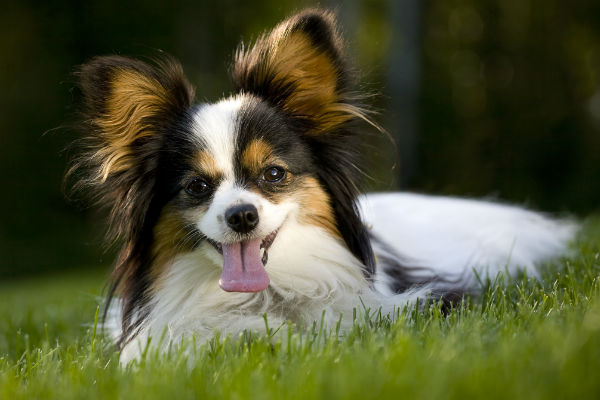
The Papillon ( French for ‘butterfly[-eared]’), also called the Continental Toy Spaniel, is a breed of dog, of the spaniel type. One of the oldest of the toy spaniels, it derives its name from its characteristic butterfly-like look of the long and fringed hair on the ears. A Papillon with dropped ears is called a Phalene, which translates to a moth in French.
Papillons are very intelligent and self-assured dogs that have a very easy time learning new tricks. These dogs can be sociable with children and strangers but are generally reserved around new people. They can also be socialized to get along well with other pets, but care should be taken with rambunctious pets or cats with claws, as they may injure them. If not properly socialized, Papillons can be distrustful and exhibit aggressive tendencies toward other dogs and people. Papillons may also be very playful and affectionate. Widely known as great companion dogs, they have the spirit and energy to keep up with active families, but can also be calm enough to be happy with sleeping in the arms of an equally affectionate owner. Due to their high energy level, they demand an augmented exercise routine, relative to the average companion breed. Papillons are known as excellent watchdogs, as they will alert their owner to changes in their environment. They may be considered garrulous like many other toy dogs. They can withstand heat, but are more sensitive to cold temperatures because of their single-coated fur, and should not be left outside unattended in cold weather.
The most iconic aspect of Papillons is their ears, which are large and well fringed, giving them a butterfly wing-like appearance. Papillons are particoloured or white with patches of any colour. An all-white dog or a dog with no white is disqualified from the conformation show ring. Ablaze (area of white extending down between the eyes) and noseband is preferred over a solid-coloured head, but not required. Nose, eye rims, and lips should be black. Paw pads vary in colour from black to pink, depending on the colouring of the dog. Read More…
Phalène

The Phalène is an intelligent dog. They learn new tricks easily. They are sociable with the family but reserved around new people. They need to be socialized to get along well with other pets or they can be distrustful and exhibit aggressive tendencies toward other dogs and people. Phalènes are playful and affectionate. They are lap dogs and companion dogs. They have enough energy to keep up with active families, but can also be calm enough to live in an apartment. Due to their rather high energy level, they demand regular exercise routine, as other companion breeds. Papillons are known as good watchdogs and they will alert their owner to changes in their environment. They can be noisy like many other toy dogs. The Papillon can withstand heat but is more sensitive to cold temperatures because of their single-coated fur, and should not be left outside unattended in cold weather.
The Phalène is the earliest form of the Papillon; the appearance of the erect-eared variety was not documented until the 16th century, by which time the Phalène had been portrayed in numerous paintings, particularly in portraits of the wealthy by Old Masters and their students. Belgium, France, Spain, and Italy have all been credited with the creation or development of Butterfly Dogs. The Papillon gained popularity after the turn of the nineteenth century. By the middle of the 20th century, the Papillon’s popularity had far outstripped that of the Phalène, which sank low enough into obscurity to become endangered. The breed had fanciers and did not slip into extinction. At some point, the variety was named phalène, or ‘night moth’.
The 21st century has seen a revival of interest in the Phalène, with its fanciers pointing out that in countries where it is judged together with the Papillon, judges must be familiar enough with the breed standard to appreciate the qualities of a well-bred Phalène, and not confuse its dropped ears with those of a semi-erect eared Papillon, which would suggest a conformation fault.
Schipperke
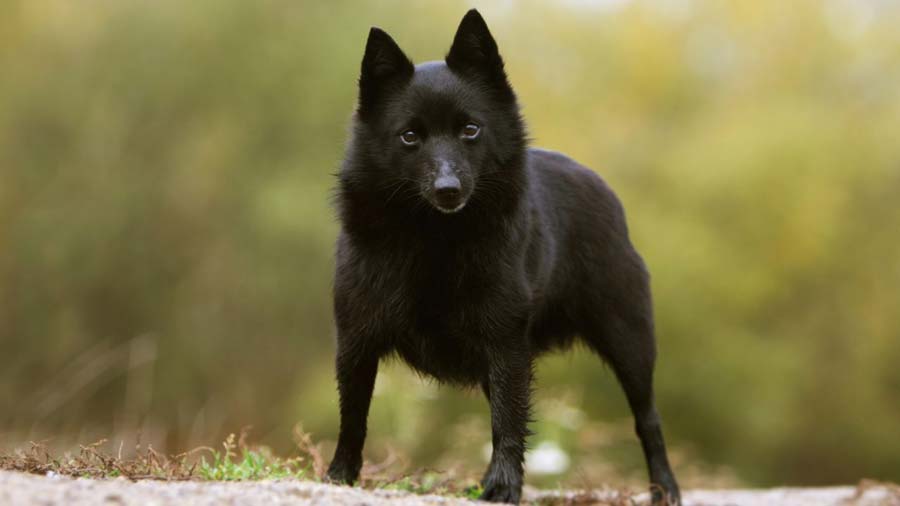
A Schipperke is a small Belgian breed of dog that originated in the early 16th century. There has been a long informal debate over whether this type of dog is a spitz or miniature sheepdog. In their home country of Belgium, they are considered a small shepherd.
Their small, pointed ears are erect atop the head. Schipperkes are double-coated with a soft, fluffy undercoat that is covered by a harsher-feeling and longer outer coat. One of the breed characteristics is a long ruff that surrounds the neck and then a strip trails down towards the rear of the dog. They also have longer fur on their hind legs called culottes. The breed is black, or blonde (some blondes have a silkier coat), and the coat is shiny.
Dogs of this breed usually weigh 3–9 kg (6.6–19.8 lb). Puppies are born with tails in different lengths. However, they are among those dogs with the natural bobtail C189G mutation:[4] In Canada and the United States, the tail is usually docked the day after birth. In countries that have bans on docking, Schipperkes display their natural tails, which vary in type.
Known for a stubborn, mischievous, and headstrong temperament, it also chases small animals. The Schipperke is sometimes referred to as the “little black fox”, the “Tasmanian black devil”, or the “little black devil”. They are naturally curious and high-energy dogs and require ample exercise and supervision. Schipperkes are very smart and independent; and sometimes debate listening to owners, instead choosing to do whatever benefits them the most, and are not necessarily the proper dog for a first-time dog owner. Schipperkes require training and secure, fenced-in space in which to run. They are formidable barkers and can be aggressive with other dogs. Otherwise, they are overall good dogs, and their personality is a matter of how they are raised, and who they are around. They often have a high prey drive, focusing on rodents and small animals, and can excel at obedience and agility competitions. Read More…
Talbot (dog)
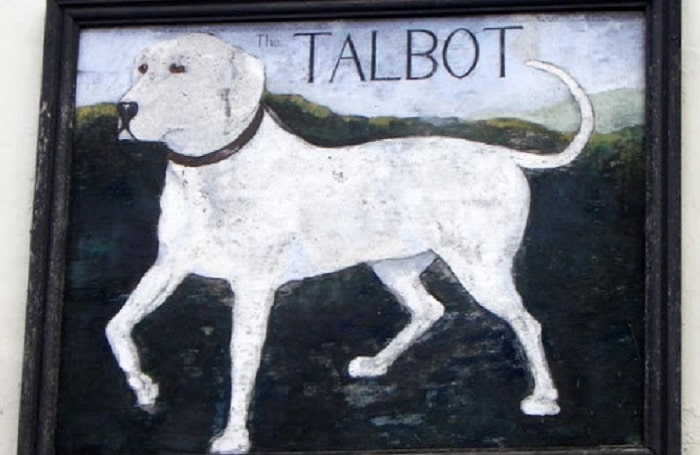
The Talbot was a type of hunting hound common in England during the Middle Ages. It is depicted in the art of the period as small to medium-sized, white in colour, with short legs, large powerful feet, a deep chest with a slender waist, long drooping ears, and a very long curled tail. It is shown in one well-known example at Haddon Hall with a fierce facial expression. It is now extinct but is believed to be an ancestor of the modern beagle and bloodhound. It is uncertain whether it was a scent hound (bred for the quality of its nose), a sighthound (bred for the quality of sight and speed), or a dog used for digging out quarry. Nor is it known what type of quarry it hunted, whether deer, fox, boar, etc.
The breed is said to have originated in Normandy, perhaps to have been the white St. Hubert Hound, and to have been brought to England by William the Conqueror, but this is not supported by evidence. There are no known references to the talbot as a breed of hound in Medieval French, and none have been found in English before the mid-16th century.
In Medieval times, “Talbot” was a common name for an individual hound, as used before 1400 in Chaucer’s The Nun’s Priest’s Tale (line 3383), and is used as an example of a hound name in George Turberville’s 1575 work The Noble Art of Venerie or Huntyng.
By the 17th century it clearly existed as a breed or type. Large, heavy, slow hounds were ‘talbot-like’, whatever their colour, though the ‘milk white’ was ‘the true talbot’. In his poem “The Chase”, published in 1735, William Somervile describes the use of “lime-hounds” (leash hounds) on the Scottish Borders to catch thieves, obviously referring to the bloodhound and the sleuth hound, but adds that the (white) talbot was the “prime” example of this type of hound.
The origin of both the name and the animal is uncertain. In a quotation from about 1449, the king referred to John Talbot, 1st Earl of Shrewsbury as “Talbott, oure good dogge”, perhaps as a play on his name, or an allusion to that family’s heraldic badge. In a 1445 illuminated manuscript in the British Library John Talbot, 1st Earl of Shrewsbury is depicted presenting a Book of Romances to Queen Margaret of Anjou, with a short-legged and long-eared white hound standing behind him, which serves to identify him symbolically. It is very similar to a 15th-century depiction on a ceiling at Haddon Hall, Derbyshire, made following the marriage of Sir Henry Vernon (1445-1515) to Ann Talbot, daughter of John Talbot, 2nd Earl of Shrewsbury.
Talbot Hounds Fountain in Trevelyan Square, Leeds, a modern imaginary image of the talbot
The talbot and the greyhound were, apparently, the only hounds used in English heraldry, and it could be that the talbot originated as an emblematic or heraldic hound. References to this heraldic talbot seem to be earlier than any references to a real dog. The talbot appears in many coats of arms, for instance in later ones of the Earls of Shrewsbury, in which two talbots appear as supporters.
It is quite plausible that from these beginnings the name “talbot” was extended to any large heavy white scent hound, and from there helped to establish a breed or type. It was certainly similar to the bloodhound (“white” is given as one of the colours of the bloodhound in the 16th and 17th centuries) as regards size, and as regards use to a leash-hound.
As earliest references to this dog are much later than those to bloodhounds it cannot convincingly be regarded as an ancestor of the bloodhound.
Unusual black Talbot on an inn sign at Iwerne Minster, Dorset, a modern imaginary image of the talbot
The talbot seems to have existed as a breed, a little distinct from the bloodhound, until the end of the 18th century, after which, like two other large breeds to which it may have been related, the Northern Hound and the Southern Hound, it disappeared. Some early dog-shows apparently offered classes for talbots but attracted no entrants so were dropped.
Tervuren dog
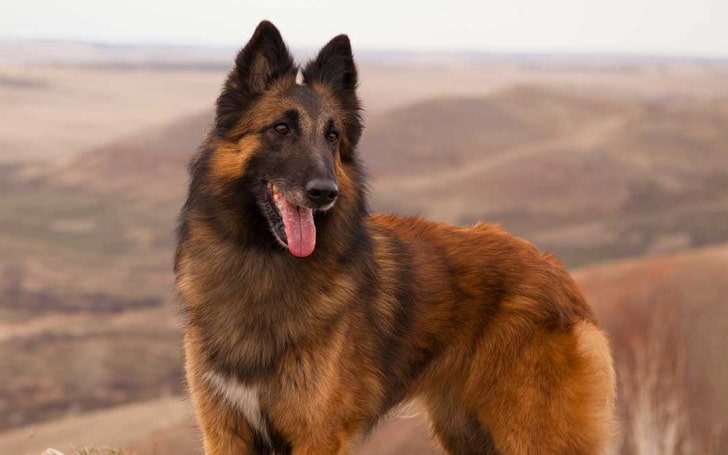
The Tervuren (sometimes spelled Tervueren), is a breed of dog named after a town in Belgium. Its classification varies, being classified under some breed standards as a breed in its own right, and in others as one of several acceptable variations of the Belgian Shepherd Dog. It is usually listed within breed standards under one or other, or a combination, of these names.
In the United States, since 1959, the AKC recognizes it under the name Belgian Tervuren. Prior to 1959, the Belgium Tervuren was shown as Belgium Sheepdog. In that year, the AKC granted the breed separate status.
In Canada, the Canadian Kennel Club recognizes the Tervuren as a variety of the Belgian Shepherd (prior to 2005, Belgian Shepherd Dogs were called Belgian Sheepdogs)
The Tervuren is a medium-sized, square-proportioned dog in the Herding dog group. Males stand between 24 and 26 inches and weigh approximately 56 lb. Females are finer and smaller. It is recognized by its thick double coat, generally mahogany with varying degrees of the black overlay (completely missing overlay on males is a serious fault), including a black mask. A small patch of white on the chest is permissible, as well as white tips on toes. The Tervuren may also be sable or grey, but this may be penalized in the show ring in some countries according to the standard of the registering body. While the FCI permits any type of red (mahogany) coat including pale yellow (sand colour) and grey the AKC has stricter rules regarding colour. While the FCI states that fawn/mahogany is to be preferred, grey colour is a fault under AKC rules. Read More…
